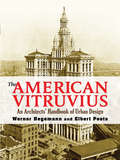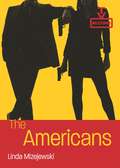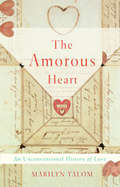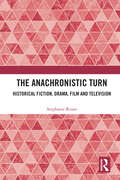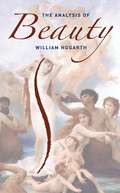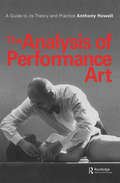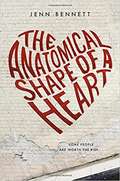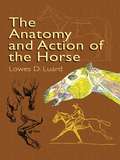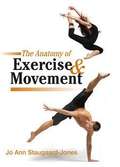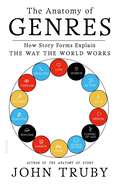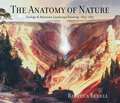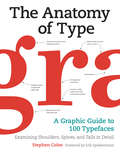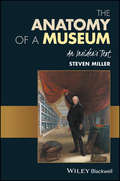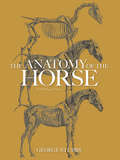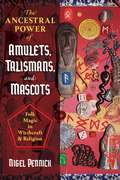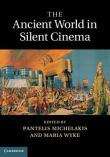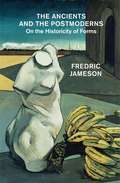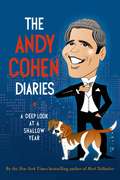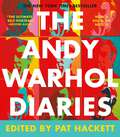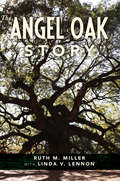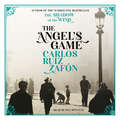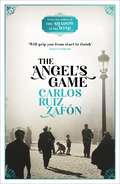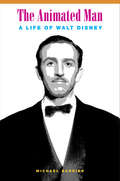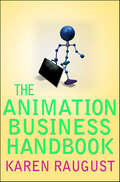- Table View
- List View
The American Vitruvius: An Architects' Handbook of Urban Design
by Werner Hegemann Elbert PeetsThis atlas of architectural design advocates rational as well as humanistic principles in the development of the urban environment. Drawing upon the ideals that inspired the great Roman architect, it promotes the Vitruvian maxims of longevity, beauty, and commodity. It also defines the thinking behind modern American city planning. First published in 1922, The American Vitruvius arose from a collaboration between two students of American urbanism. Werner Hegemann, an urban planner, and Elbert Peets, a graduate of Harvard's School of Landscape Architecture, selected more than 1,200 plans, elevations, and perspective views. Their choices depict a tremendous variety of European and American structures dating from the Renaissance to the early twentieth century. Ranging from Rome's vast Piazza San Pietro to modest German and English garden suburbs, this volume explores all manner of urban design, including American college campuses, parks, and cemeteries; L'Enfant's plan of Washington, DC; and other civic centers. Design Book Review hailed this classic as "the most complete single-volume survey of canonical cases of urbanism," offering "a scintillating collection of uncommon and forgotten designs." An essential reference for every architect and student of architecture, this affordable edition is of particular value in light of the current New Urbanism trend.
The Americans (TV Milestones Series)
by Linda MizejewskiBased on the actual KGB strategy of planting "illegals" into American life during the Cold War, The Americans (FX 2013–2018) focuses on Philip and Elizabeth Jennings (Matthew Rhys and Kerri Russell), Soviet spies posing as middlebrow travel agents in the Virginia suburbs. Groundbreaking and unsettling, The Americans spins its stories of espionage, violence, and politics around narratives of marriage, romance, bromance, and family. Exploring the series’ bold merger of the spy genre and domestic melodrama, author Linda Mizejewski focuses on the characters and relationships that made this series memorable: the extraordinary women who defy the femme fatale stereotype of the spy genre, the conflicted men, and perhaps most shockingly, the children who are both victims and provocateurs Do viewers of this Cold War thriller root for "the good guys"—the American agents in pursuit of the Jennings—or for the Jennings themselves, the attractive couple whose personal stories compel us even as they plot the takedown of the United States? Mizejewski argues for the importance of The Americans’ portrayal of 1980s suburban life as a microcosm of the moral complexities of citizenship and national identity. Drawing on television studies and feminist media theory, this book examines the series’ seamless loop of espionage violence and family melodrama, as well as its savvy uses of 1980s pop culture and music. Far from invoking nostalgia, the replication of the 1980s "look" invokes uncertainties about how, exactly, we should see Reagan’s America and the Cold War. Yet the appeal of this series rests on solid footing in the Americanism it both critiques and espouses. Mizejewski examines The Americans’ struggles with this ambiguity and with the contradictions of identity, gender, marriage, and the meanings of home. Everyone from scholars and students of television and media studies, genre studies, gender and sexuality studies, and popular culture, to superfans who can’t believe the show is over will revel in this highly approachable and fun read.
The Amorous Heart: An Unconventional History of Love
by Marilyn YalomAn eminent scholar unearths the captivating history of the two-lobed heart symbol from scripture and tapestry to T-shirts and text messages, shedding light on how we have expressed love since antiquityThe symmetrical, exuberant heart is everywhere: it gives shape to candy, pendants, the frothy milk on top of a cappuccino, and much else. How can we explain the ubiquity of what might be the most recognizable symbol in the world?In The Amorous Heart, Marilyn Yalom tracks the heart metaphor and heart iconography across two thousand years, through Christian theology, pagan love poetry, medieval painting, Shakespearean drama, Enlightenment science, and into the present. She argues that the symbol reveals a tension between love as romantic and sexual on the one hand, and as religious and spiritual on the other. Ultimately, the heart symbol is a guide to the astonishing variety of human affections, from the erotic to the chaste and from the unrequited to the conjugal.
The Anachronistic Turn: Historical Fiction, Drama, Film and Television
by Stephanie RussoThe Anachronistic Turn: Historical Fiction, Drama, Film and Television is the first study to investigate the ways in which the creative use of anachronism in historical fictions can allow us to rethink the relationship between past and present. Through an examination of literary, cinematic, and popular texts and practices, this book investigates how twenty-first century historical fictions use creative anachronisms as a way of understanding modern issues and anxieties. Drawing together a wide range of texts across all forms of historical fiction - novels, dramas, musicals, films and television - this book re-frames anachronism not as an error, but as a deliberate strategy that emphasises the fictionalising tendencies of all forms of historical writing. The book achieves this by exploring three core themes: the developing trends in the twenty-first century for creators of historical fiction to include deliberate anachronisms, such as contemporary references, music, and language; the ways in which the deliberate use of anachronism in historical fiction can allow us to rethink the relationship between past and present, and; the way that contemporary historical fiction uses anachronism to better understand modern issues and anxieties. This book will appeal to students and scholars of historical fiction, contemporary historical film and television studies, and historical theatre studies.
The Analysis of Beauty: Written With A View Of Fixing The Fluctuating Ideas Of Taste
by William HogarthEnglish artist William Hogarth (1697-1764) is most famous for his satirical caricatures and moral paintings, the forerunners of cartoons. In this instructive volume, the august painter and engraver discusses and illustrates the use of serpentine lines in the expression of grace and beauty. Hogarth defines six qualities -- fitness, variety, regularity, simplicity, intricacy, and quantity -- and dramatizes their effective combination in images that employ S-shaped lines. Originally published in 1753 with the subtitle, "Written with a View of Fixing the Fluctuating Ideas of Taste," Hogarth's book addresses the general public, not just artists and connoisseurs. More than 30 striking black-and-white plates trace visual and formal applications of the serpentine line of beauty, portraying subjects as diverse as everyday objects, examples from nature, and classical sculpture and other works by the great masters. A revolutionary approach to art theory by an experienced painter, this historic book offers fascinating insights into ideals of beauty and aesthetics.
The Analysis of Performance Art: A Guide to its Theory and Practice
by Anthony Howell A. HowellThis finely illustrated book offers a simple yet comprehensive 'grammar' of a new discipline. Performance Art first became popular in the fifties when artists began creating 'happenings'. Since then the artist as a performer has challenged many of the accepted rules of the theatre and radically altered our notion of what constitutes visual art. This is the first publication to outline the essential characteristics of the field and to put forward a method for teaching the subject as a discipline distinct from dance, drama, painting or sculpture.Taking the theory of primary and secondary colours as his model, Anthony Howell posits three primaries of action and shows how these may be mixed to obtain a secondary range of actions. Based on a taught course, the system is designed for practical use in the studio and is also entertaining to explore. Examples are cited from leading performance groups and practitioners such as Bobbie Baker, Orlan, Stelarc, Annie Sprinkle, Robert Wilson, Goat Island, and Station House Opera. This volume, however, is not just an illustrated grammar of action - it also shows how the syntax of that grammar has psychoanalytic repercussions. This enables the performer to relate the system to lived experience, ensuring a realisation that meaning is being dealt with through these actions and that the stystem set forth is more than a dry structuring of the characteristics of movement.Freud's notion of 'transference' and Lacan's understanding of 'repetition' are compared to a performer's usage of the same terms. Thus the book provides a psychoanalytic critique of performance at the same time as it outlines an efficient method for creating live work on both fine art and theatre courses.
The Anatomical Shape of a Heart
by Jenn BennettArtist Beatrix Adams knows exactly how she's spending the summer before her senior year. Determined to follow in Da Vinci's footsteps, she's ready to tackle the one thing that will give her an advantage in a museum-sponsored scholarship contest: drawing actual cadavers. But when she tries to sneak her way into the hospital's Willed Body program and misses the last metro train home, she meets a boy who turns her summer plans upside down.<P><P> Jack is charming, wildly attractive.. and possibly one of San Francisco's most notorious graffiti artists. On midnight buses and city rooftops, Beatrix begins to see who Jack really is-and tries to uncover what he's hiding that leaves him so wounded. But will these secrets come back to haunt him? Or will the skeletons in Beatrix's own family's closet tear them apart?
The Anatomy and Action of the Horse
by Lowes D. LuardThis easy-to-read text explains the horse as a machine designed for movement. Using different colors in his drawings, the author not only describes with clarity the horse's skeleton and the functions of various muscles, but also creates images that have the power to suggest movement and stress. More than 75 illustrations include accurate diagrams and color illustrations fo the horse's anatomy, as well as meticulously rendered sketches of the entire animal.Of value to students and teachers of art, this book will also appeal to horse lovers who want a deeper understanding -- without having to examine the anatomical complexities of the subject -- of why this animal is capable of moving with such grace and speed.
The Anatomy of Exercise And Movement: For the Study of Dance, Pilates, Sport and Yoga
by Jo Staugaard-JonesThis book serves as a bridge between biomechanics and the practice of sport, Pilates, yoga, and dance, providing the reader with a complete understanding of how the body functions while exercising.
The Anatomy of Genres: How Story Forms Explain the Way the World Works
by John TrubyA guide to understanding the major genres of the story world by the legendary writing teacher and author of The Anatomy of Story, John Truby.Most people think genres are simply categories on Netflix or Amazon that provide a helpful guide to making entertainment choices. Most people are wrong. Genre stories aren’t just a small subset of the films, video games, TV shows, and books that people consume. They are the all-stars of the entertainment world, comprising the vast majority of popular stories worldwide. That’s why businesses—movie studios, production companies, video game studios, and publishing houses—buy and sell them. Writers who want to succeed professionally must write the stories these businesses want to buy. Simply put, the storytelling game is won by mastering the structure of genres.The Anatomy of Genres: How Story Forms Explain the Way the World Works is the legendary writing teacher John Truby’s step-by-step guide to understanding and using the basic building blocks of the story world. He details the three ironclad rules of successful genre writing, and analyzes more than a dozen major genres and the essential plot events, or “beats,” that define each of them. As he shows, the ability to combine these beats in the right way is what separates stories that sell from those that don’t. Truby also reveals how a single story can combine elements of different genres, and how the best writers use this technique to craft unforgettable stories that stand out from the crowd. Just as Truby’s first book, The Anatomy of Story, changed the way writers develop stories, The Anatomy of Genres will enhance their quality and expand the impact they have on the world.
The Anatomy of Nature: Geology and American Landscape Painting, 1825-1875
by Rebecca BedellAn illuminating account of the interplay between science, religion, and nature in nineteenth-century landscape paintingGeology was in vogue in nineteenth-century America. People crowded lecture halls to hear geologists speak, and parlor mineral cabinets signaled social respectability and intellectual engagement. This was also the heyday of the Hudson River School, and many prominent landscape painters avidly studied geology. Thomas Cole, Asher Durand, Frederic Church, John F. Kensett, William Stanley Haseltine, Thomas Moran, and other artists read scientific texts, participated in geological surveys, and carried rock hammers into the field to collect fossils and mineral specimens. As they crafted their paintings, these artists drew on their geological knowledge to shape new vocabularies of landscape elements resonant with moral, spiritual, and intellectual ideas.Rebecca Bedell contributes to current debates about the relationship among art, science, and religion by exploring this phenomenon. She shows that at a time when many geologists sought to disentangle their science from religion, American artists generally sidestepped the era's more materialist science, particularly Darwinism. They favored a conservative, Christianized geology that promoted scientific study as a way to understand God. Their art was both shaped by and sought to preserve this threatened version of the science. And, through their art, they advanced consequential social developments, including westward expansion, scenic tourism, the emergence of a therapeutic culture, and the creation of a coherent and cohesive national identity.This major study of the Hudson River School offers an unprecedented account of the role of geology in nineteenth-century landscape painting. It yields fresh insights into some of the most influential works of American art and enriches our understanding of the relationship between art and nature, and between science and religion, in the nineteenth century. It will draw a broad audience of art historians, Americanists, historians of science, and readers interested in the American natural landscape.
The Anatomy of Type
by Tony Seddon Stephen ColesThe Anatomy of Type is the ultimate stylistic guide to the intricacies and design of 100 indispensable typefaces. A delightful, colorful, and visual reference guide created by Stephen Coles and Tony Seddon---two acknowledged pros in the font design world---The Anatomy of Type was developed with typographers, graphic designers, and font geeks in mind, graphically and visually expanding on the current font-mania initiated by Simon Garfields's Just My Type. The Anatomy of Type explores one hundred traditional and modern typefaces in loving detail, with a full spread devoted to each entry. The full character set from each typeface is shown, and the best letters for identification are enlarged and annotated, revealing key features, anatomical details, and the finer, often-overlooked elements of type design. Containing in-depth information on everything from the designer and foundry, the year of release, and the different weights and styles available, The Anatomy of Type is more than a reference guide to the intricacies of typeface design. It is a visual send-up of some of the world's most beloved typefaces, whimsically displayed in vibrant color.
The Anatomy of a Museum: An Insider's Text
by Steven MillerWritten by a museum professional and based on a course taught for many years, The Anatomy of a Museum is an engaging and accessible volume that provides a unique insider’s guide to what museums are and how they operate. An insider’s view of the rarefied world of the museum that provides a refreshing and unique account of the reality of the workings of museum life The material has been successfully tested in a course that the author has taught for 14 years Miller has extensive experience at all levels of museum work, from painting walls for exhibitions to museum directorship Clearly and engagingly written, the book covers all the component parts and various disciplines of museum operations, and opinions and perspectives are drawn from a deep knowledge of the field Includes useful pedagogical material, including questions, discussion topics, and a range of anecdotes
The Anatomy of the Horse
by George StubbsGeorge Stubbs (1724-1806), an English artist famous for his portraits of thoroughbred race horses and for other animal paintings, was also the author of the illustrations and text of The Anatomy of the Horse, one of the truly remarkable anatomical studies of its subject. First published in 1766, Stubbs' work was based on numerous dissections, a practice far from generally accepted in his century. Stubbs' horses, shown in this edition on 36 large plates, are memorable for their uncanny life-like quality, nobility, and extreme anatomical precision. In this systematic study, Stubbs depicts the horse in three positions - side, front, and back. He first presents the skeleton alone in each of these three positions, then devotes to each position five studies of layers of muscles, fascias, ligaments, nerves, arteries, veins, glands, and cartilages. Accompanying each of these eighteen etchings is a schematic etched outline with lettered parts that are keyed to the identifying text. The text is given both in Stubbs' original version and in a modernized version prepared in the Thirties by J. C. McCunn and C. W. Ottaway.
The Ancestral Power of Amulets, Talismans, and Mascots: Folk Magic in Witchcraft and Religion
by Nigel Pennick• Looks at the age-old spiritual principles, folklore, and esoteric traditions behind the creation of magical objects as well as the use of numbers, colors, sigils, geometric emblems, knots, crosses, pentagrams, and other symbols • Explores hundreds of artifacts, such as hagstones, Norse directional amulets, car hood mascots, objects made from bones and teeth, those connected with plants and animals, charms associated with gambling, and religious relics • Includes photos of artifacts from the author&’s extensive collection Offering an illustrated exploration of the origins and history of amulets, lucky charms, talismans, and mascots, including photos of unique and original artifacts from his extensive collection, Nigel Pennick examines these objects from a magical perspective, from ancient Egypt to the present. He looks at the age-old spiritual principles, folklore, and esoteric traditions behind their creation as well as the use of numbers, colors, sigils, geometric emblems, knots, crosses, pentagrams, and other symbols. Pennick explores magical charms and objects manufactured from bones, teeth, claws, and horns and those that include symbols of the human body. He also discusses religious relics as well as the combining of charms to make more powerful objects, from the bind runes of the Norse and the crowns of ancient Egypt to the Mojo hand and the medicine pouch. Revealing the lasting power of amulets, talismans, charms, and mascots, Pennick shows that these objects and symbols have retained their magic across the centuries.
The Ancient World in Silent Cinema
by Maria Wyke Pantelis MichelakisIn the first four decades of cinema, hundreds of films were made that drew their inspiration from ancient Greece, Rome, Egypt and the Bible. Few of these films have been studied, and even fewer have received critical attention. The films in question, ranging from historical and mythological epics to adaptations of ancient drama, burlesques, animated cartoons and documentaries, suggest a preoccupation with the ancient world that competes in intensity and breadth with that of Hollywood's classical era. What contribution did the worlds of antiquity make to early cinema, and how did they themselves change as a result? Existing prints as well as ephemera scattered in film archives and libraries around the world constitute an enormous field of research, and this edited collection is a first systematic attempt to focus on the instrumental role of silent cinema in early twentieth-century conceptualizations of the ancient Mediterranean and Middle East.
The Ancients and the Postmoderns
by Fredric JamesonFredric Jameson sweeps from the Renaissance to The Wire High modernism is now as far from us as antiquity was for the Renaissance. Such is the premise of Fredric Jameson's major new work in which modernist works, this time in painting (Rubens) and music (Wagner and Mahler), are pitted against late-modernist ones (in film) as well as a variety of postmodern experiments (from SF to The Wire, from "Eurotrash" in opera to Altman and East German literature): all of which attempt, in their different ways, to invent new forms to grasp a specific social totality. Throughout the historical periods, argues Jameson, the question of narrative persists through its multiple formal changes and metamorphoses.From the Hardcover edition.
The Andy Cohen Diaries: A Deep Look at a Shallow Year
by Andy CohenA year in the whirlwind life of the beloved pop icon Andy Cohen, in his own cheeky, candid, and irreverent words<P> As a TV Producer and host of the smash late night show Watch What Happens Live, Andy Cohen has a front row seat to an exciting world not many get to see. In this dishy, detailed diary of one year in his life, Andy goes out on the town, drops names, hosts a ton of shows, becomes codependent with Real Housewives, makes trouble, calls his mom, drops some more names, and, while searching for love, finds it with a dog. We learn everything from which celebrity peed in her WWHL dressing room to which Housewives are causing trouble and how. Nothing is off limits – including dating. We see Andy at home and with close friends and family (including his beloved and unforgettable mom). Throughout, Andy tells us not only what goes down, but exactly what he thinks about it. Inspired by the diaries of another celebrity-obsessed Andy (Warhol), this honest, irreverent, and laugh-out-loud funny book is a one-of-a-kind account of the whos and whats of pop culture in the 21st century.
The Andy Warhol Diaries
by Andy Warhol Pat HackettIn celebration of its 25th anniversary, the bestselling classic is introduced to a new generation-with an added preface by Warhol's diarist and long-time friend, Pat Hackett, contemplating Warhol's lasting cultural impact. This international literary sensation turns the spotlight on one of the most influential and controversial figures in American culture. Filled with shocking observations about the lives, loves, and careers of the rich, famous, and fabulous, Warhol's journal is endlessly fun and fascinating. Spanning the mid-1970s until just a few days before his death in 1987, THE ANDY WARHOL DIARIES is a compendium of the more than twenty thousand pages of the artist's diary that he dictated daily to Pat Hackett. In it, Warhol gives us the ultimate backstage pass to practically everything that went on in the world-both high and low. He hangs out with "everybody": Jackie O ("thinks she's so grand she doesn't even owe it to the public to have another great marriage to somebody big"), Yoko Ono ("We dialed F-U-C-K-Y-O-U and L-O-V-E-Y-O-U to see what happened, we had so much fun"), and "Princess Marina of, I guess, Greece," along with art-world rock stars Jean-Michel Basquiat, Francis Bacon, Salvador Dali, and Keith Haring. Warhol had something to say about everyone who crossed his path, whether it was Lou Reed or Liberace, Patti Smith or Diana Ross, Frank Sinatra or Michael Jackson. A true cultural artifact, THE ANDY WARHOL DIARIES amounts to a portrait of an artist-and an era-unlike any other.
The Angel Oak Story
by Ruth M. Miller Linda V. LennonAngel Oak is estimated to be more than 400 years old. The story of the live oak begins with the "purchase" of Johns Island from the Cussoe Indians by a representative of Sir Anthony Ashley Cooper in 1675. The land upon which the tree grows was then granted to Abraham Waight in 1717. The oak garnered its name when descendant Martha Waight married Justus Angel. This same family maintained ownership of the property for 242 years. Today, the Angel Oak is owned by the City of Charleston. Authors Ruth M. Miller and Linda Lennon describe life on Johns Island through 300 years and the special place the tree has held in the hearts of Lowcountry residents. A foreword was provided by Becky Woods, communications manager for the Lowcountry Land Trust.
The Angel's Game: The Cemetery of Forgotten Books 2
by Carlos Ruiz ZafonIn an abandoned mansion at the heart of Barcelona, a young man - David Martin - makes his living by writing sensationalist novels under a pseudonym. The survivor of a troubled childhood, he has taken refuge in the world of books, and spends his nights spinning baroque tales about the city's underworld. But perhaps his dark imaginings are not as strange as they seem, for in a locked room deep within the house letters hinting at the mysterious death of the previous owner. Like a slow poison, the history of the place seeps into his bones as he struggles with an impossible love. Then David receives the offer of a lifetime: he is to write a book with the power to change hearts and minds. In return, he will receive a fortune, perhaps more. But as David begins the work, he realises that there is a connection between this haunting book and the shadows that surround his home...Read by Dan Stevens(p) 2009 Orion Publishing Group
The Angel's Game: The Cemetery of Forgotten Books 2
by Carlos Ruiz ZafonThe stunning new novel from the internationally bestselling author of THE SHADOW OF THE WIND.In an abandoned mansion at the heart of Barcelona, a young man - David Martin - makes his living by writing sensationalist novels under a pseudonym. The survivor of a troubled childhood, he has taken refuge in the world of books, and spends his nights spinning baroque tales about the city's underworld. But perhaps his dark imaginings are not as strange as they seem, for in a locked room deep within the house letters hinting at the mysterious death of the previous owner. Like a slow poison, the history of the place seeps into his bones as he struggles with an impossible love. Then David receives the offer of a lifetime: he is to write a book with the power to change hearts and minds. In return, he will receive a fortune, perhaps more. But as David begins the work, he realises that there is a connection between this haunting book and the shadows that surround his home...
The Animated Man: A Life of Walt Disney
by Michael BarrierWalt Disney (1901-1966) was one of the most significant creative forces of the twentieth century, a man who made a lasting impact on the art of the animated film, the history of American business, and the evolution of twentieth-century American culture. He was both a creative visionary and a dynamic entrepreneur, roles whose demands he often could not reconcile. In his compelling new biography, noted animation historian Michael Barrier avoids the well-traveled paths of previous biographers, who have tended to portray a blemish-free Disney or to indulge in lurid speculation. Instead, he takes the full measure of the man in his many aspects. A consummate storyteller, Barrier describes how Disney transformed himself from Midwestern farm boy to scrambling young businessman to pioneering artist and, finally, to entrepreneur on a grand scale. Barrier describes in absorbing detail how Disney synchronized sound with animation in Steamboat Willie; created in Snow White and the Seven Dwarfs sympathetic cartoon characters whose appeal rivaled that of the best live-action performers; grasped television’s true potential as an unparalleled promotional device; and—not least—parlayed a backyard railroad into the Disneyland juggernaut. Based on decades of painstaking research in the Disney studio’s archives and dozens of public and private archives in the United States and Europe, The Animated Man offers freshly documented and illuminating accounts of Disney’s childhood and young adulthood in rural Missouri and Kansas City. It sheds new light on such crucial episodes in Disney’s life as the devastating 1941 strike at his studio, when his ambitions as artist and entrepreneur first came into serious conflict.Beginning in 1969, two and a half years after Disney’s death, Barrier recorded long interviews with more than 150 people who worked alongside Disney, some as early as 1922. Now almost all deceased, only a few were ever interviewed for other books. Barrier juxtaposes Disney’s own recollections against the memories of those other players to great effect. What emerges is a portrait of Walt Disney as a flawed but fascinating artist, one whose imaginative leaps allowed him to vault ahead of the competition and produce work that even today commands the attention of audiences worldwide.
The Animation Business Handbook
by Karen RaugustToday, animation is more prevalent than ever in television, films, video games, and the Internet. Karen Raugust has created a much needed, comprehensive look at the entire business. She shows in detail how a successful animation studio or entrepreneur operates, describes the process of developing an animation property from the concept stage through the finished product, and outlines business methods used to create and sell animated media.Topics covered include:* Distribution, sales, and marketing methods* Financing, budgeting, costs and revenue opportunities* The creation of ancillary entertainment and merchandise* Animation in international markets.The Animation Business Handbook is the quintessential reference for anyone in or considering entering the animation industry.
The Animation Smears Book: Uncovering Film's Most Elusive Technique
by Christian AvenderThroughout cinema, there have been various techniques to depict motion, and one style in particular is the fascinating use of smears in animation. Incredibly popular and captivating to artists, these animation smears are frames that creatively replicate motion blur captured on film, which is the phenomena that we commonly observe in our everyday life.The vast world of different techniques for smears is explored in this book, expanding way beyond their commonly believed starting point in the 1940s to their actual origins that date back to the beginning of art history with illustrations and prototypes that led to their usage in some of the earliest known theatrical animations.The Animation Smears Book: Uncovering Film’s Most Elusive Technique is a comprehensive guide that provides extensive information on the stylistic and creative aspects of smears and their impact, on how they make use of the way we perceive motion. Additionally, this book also reveals the names of artists who helped develop smears and the original techniques that were used.Thoroughly examined by a professional animator, the animation smear is highlighted as a versatile technique used in all forms of animation including 3D and stop‑motion. This book answers all of the questions that readers ever had about smears and brings clarity to this simple yet mysterious trick that has puzzled fans, scholars, and historians for centuries.
